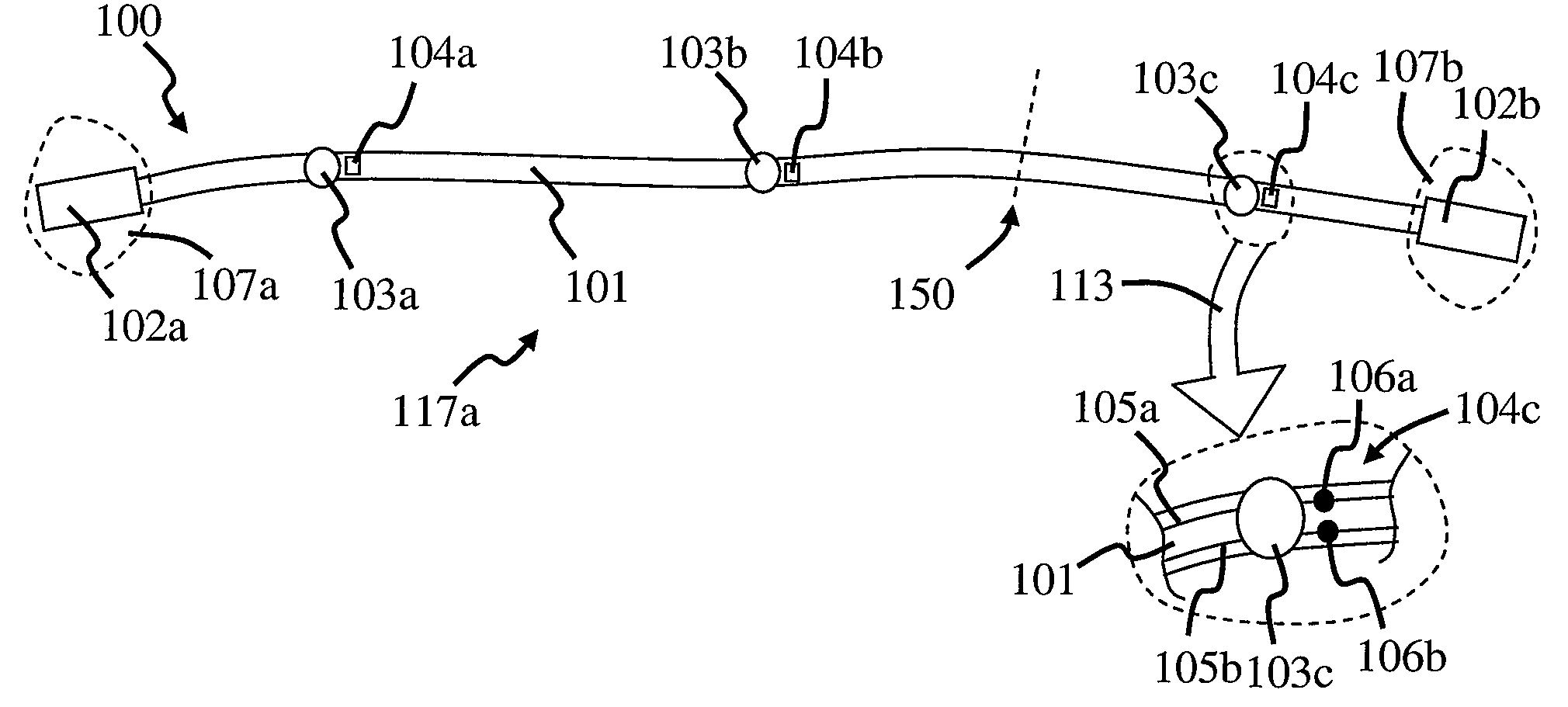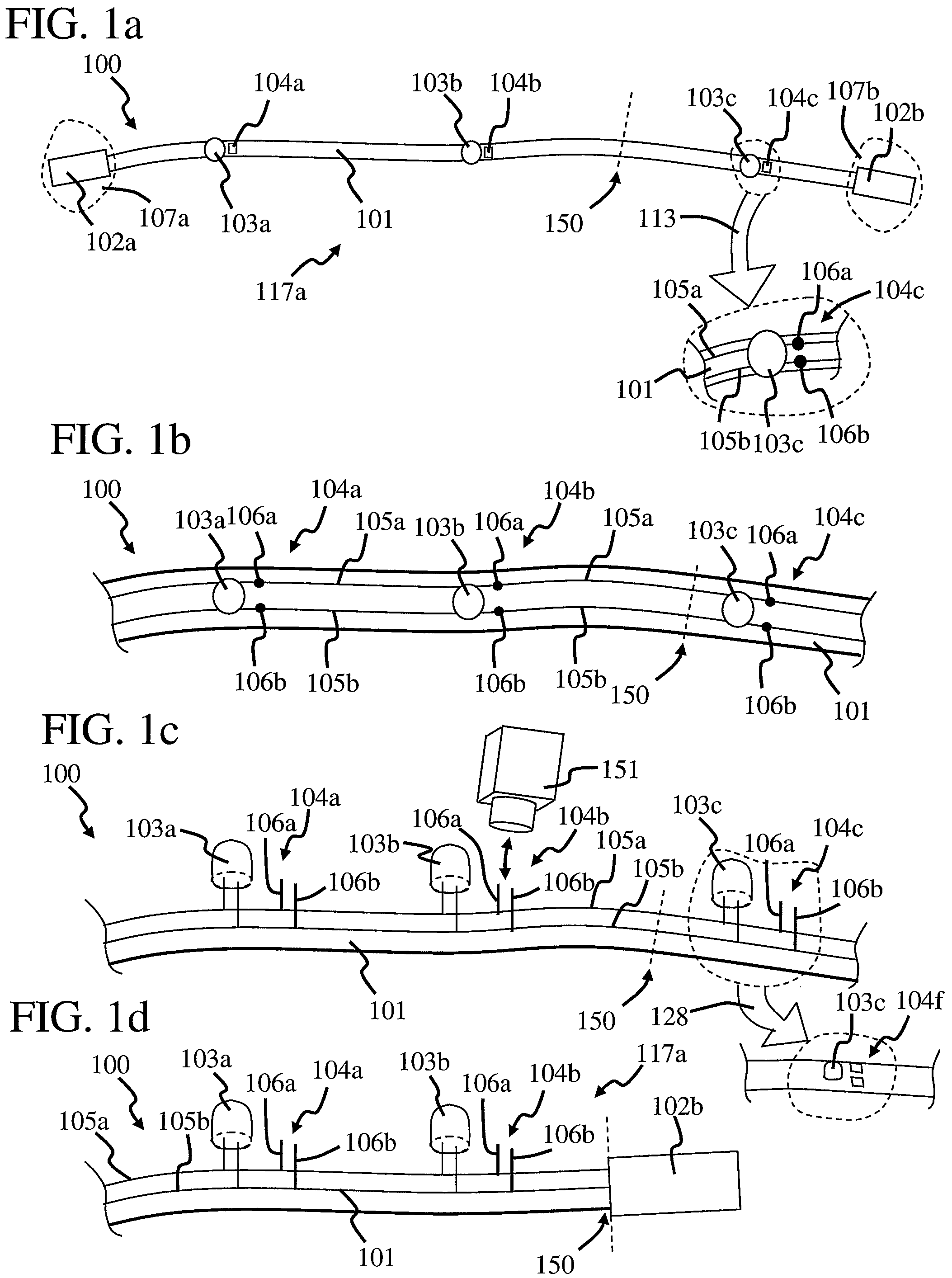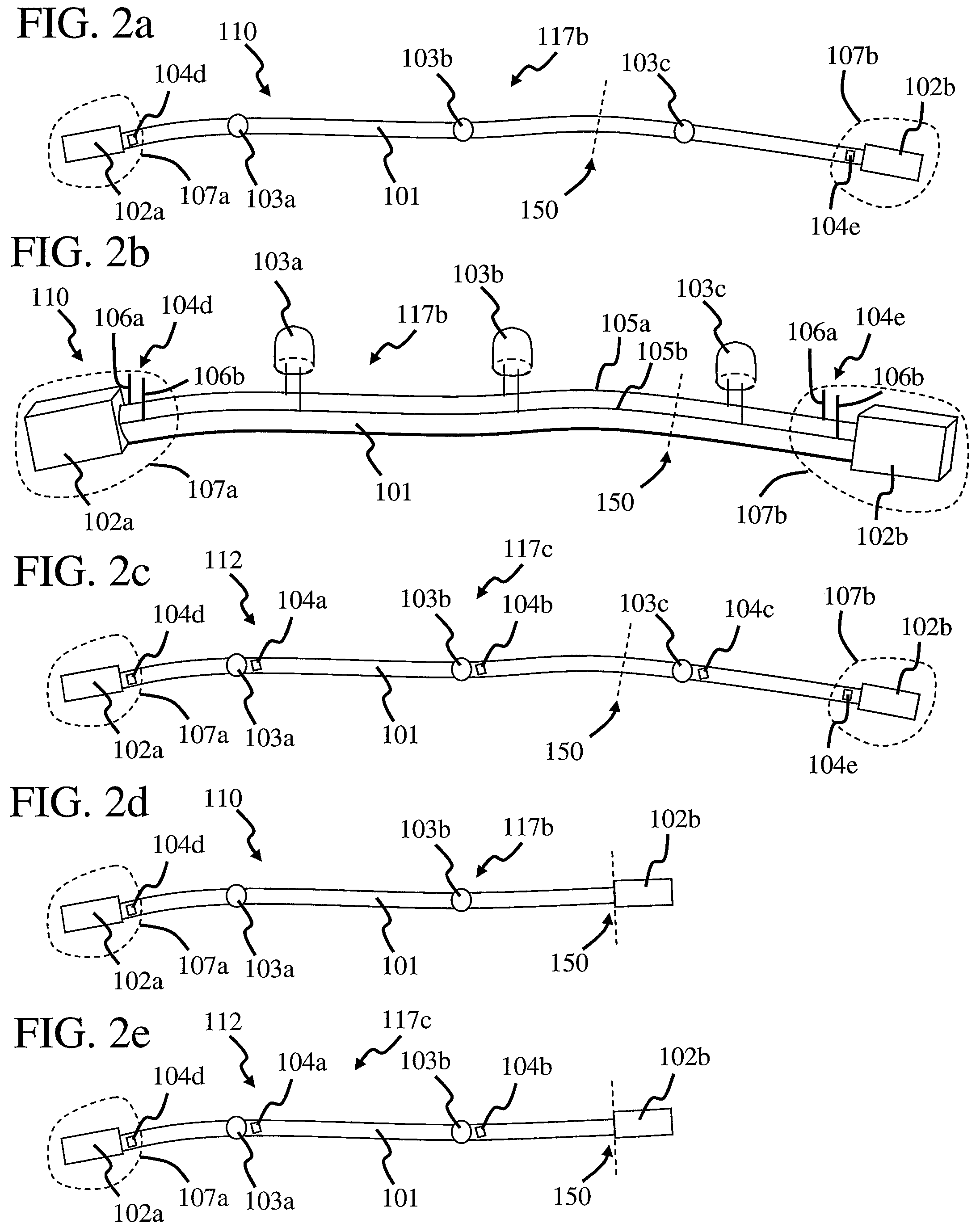Networking cable with lighting system for cable tracing
a network cable and lighting system technology, applied in the field of cables, can solve the problems of difficult identification of time-consuming and labor-intensive cable tracing methods, and difficulty in identifying which cable connectors belong to which waveguides, and achieve the effect of reducing the length of the cabl
- Summary
- Abstract
- Description
- Claims
- Application Information
AI Technical Summary
Benefits of technology
Problems solved by technology
Method used
Image
Examples
Embodiment Construction
[0033]FIGS. 1a and 1b are top and perspective views, respectively, of a networking cable 100, in accordance with the invention. In this embodiment, networking cable 100 includes a waveguide 101 with cable connectors 102a and 102b at opposed ends. It should be noted that, in networking cables, cable connectors 102a and 102b are generally of the same type. For example, they are generally both male or both female, although one can be male and the other can be female in some embodiments.
[0034]The waveguide of a networking cable generally has characteristic impedance between about 50 ohms to 100 ohms, and allows the flow of one or more data signals therethrough. The data signals can be combined together and separated from each other. The data signals generally correspond to digital data which flows through the waveguide at data rates that are typically greater then one to two million bits per second (Mbps). For example, a typical computer network flows data at ten Mbps, although there ar...
PUM
 Login to View More
Login to View More Abstract
Description
Claims
Application Information
 Login to View More
Login to View More - R&D
- Intellectual Property
- Life Sciences
- Materials
- Tech Scout
- Unparalleled Data Quality
- Higher Quality Content
- 60% Fewer Hallucinations
Browse by: Latest US Patents, China's latest patents, Technical Efficacy Thesaurus, Application Domain, Technology Topic, Popular Technical Reports.
© 2025 PatSnap. All rights reserved.Legal|Privacy policy|Modern Slavery Act Transparency Statement|Sitemap|About US| Contact US: help@patsnap.com



